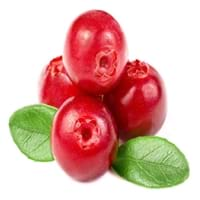Health Benefits
Cancer prevention, Improves eye vision, Prevents diabetes, Prevents high blood pressure
Cancer prevention, Heart care, Kidney stone treatment, Scurvy treatment, Ulcer prevention
General Benefits
Cures inflamed tonsils, Helps in weight loss, Maintains healthy cholesterol level
Anti-inflammatory properties, Boosts immune system, Digestive aid, Fights against infections, Strengthens bones
Skin Benefits
Anti-aging benefits, Protects skin from oxidative stress
Anti-aging benefits, Reduces wrinkles, Skin rejuvenation, Treatment of acne
Hair Benefits
Protects hair
Promotes longer and healthier hair, Protects hair, Treatment of dandruff
Allergy Symptoms
Anaphylaxis, Coughing, Diarrhea, Eczema, Hives, Itching sensation in throat, Nausea, Skin Rashes, Runny nose, Sneezing, Swelling of mouth, tongue or lips, Vomiting, Wheezing
Anaphylaxis, Breathing difficulty, Itching, Skin rash, Swelling of mouth, tongue or lips
Side Effects
Heart burn
Allergic reaction, Diarrhoea, Nausea, Stomach pain, Vomiting
Best Time to Eat
Along with meal, As a snack in the late afternoon, Don't consume at night and before bed, Don't eat after meal, Morning time (before lunch)
Any time except an hour after meal, Don't consume at night and before bed
Vitamin B5 (Pantothenic Acid)
Vitamin C (Ascorbic Acid)
Vitamin K (Phyllochinone)
Phytosterol
Not Available
Calories in Fresh Fruit with Peel
Not Available
Calories in Fresh Fruit without Peel
Not Available
Calories in Frozen Form
Not Available
Type
Fruit vegetable
Berry
Season
All seasons
Autumn
Varieties
Tamarillo bold gold, Tamarillo red beau, Tamarillo tango and Tamarillo teds red
Early Black, Howes, Ben Lear and Stevens
Color
Orange, Red, Yellow
Red
Inside Color
Creamy Yellow
White
Taste
Tangy, Tart
Bitter, Tart
Origin
South Africa
North America
Soil Type
Sandy loam, Well-drained
Clay, Sandy, Well-drained
Climatic Conditions
Rainfall, Warm
Warm
Facts about
- Up until 1967, tamarillos were referred to as tree tomatoes.
- The name tamarillo is derived from Maori word 'tama' which means leadership and rillo from spanish word 'amarillo' which means yellow.
- Europeans thought the cranberry blossom looked like the head of a sandhill crane, hence the name Cranberry.
- They are also known as bounce berries as they bounce when they ripe.
- Cranberries do not grow in water.
Top Producer
New Zealand
United States of America
Other Countries
Australia, Chile, Colombia, Malaysia, Peru, Philippines
Azerbaijan, Belarus, Bulgaria, Canada, Latvia, Macedonia, NA, Romania, Tunisia, Ukraine
Top Importer
United States of America
Europe
Top Exporter
New Zealand
United States of America
Botanical Name
Solanum betaceum
Vaccinium Macrocarpon
Synonym
tree tomato, genus Cyphomandra, Cyphomandra
Oxycoccus macrocarpus
Subkingdom
Tracheobionta
Tracheobionta
Division
Magnoliophyta
Magnoliophyta
Class
Magnoliopsida
Magnoliopsida
Subclass
Asteridae
Dillenhidae
Family
Solanaceae
Ericaceae
Species
Solanum betaceum
Vaccinium macrocarpon
Generic Group
Nightshade
Heath
Difference Between Tamarillo and Cranberry
We might think that Tamarillo and Cranberry are similar with respect to nutritional value and health benefits. But the nutrient content of both fruits is different. Tamarillo and Cranberry Facts such as their taste, shape, color, and size are also distinct. The difference between Tamarillo and Cranberry is explained here.
The amount of calories in 100 gm of fresh Tamarillo and Cranberry with peel is Not Available and 46.00 kcal and the amount of calories without peel is 31.00 kcal and Not Available respectively. Thus, Tamarillo and Cranberry belong to Low Calorie Fruits and Low Calorie Fruits category.These fruits might or might not differ with respect to their scientific classification. The order of Tamarillo and Cranberry is Solanales and Ericales respectively. Tamarillo belongs to Solanaceae family and Cranberry belongs to Ericaceae family. Tamarillo belongs to Solanum genus of Solanum betaceum species and Cranberry belongs to Vaccinium genus of Vaccinium macrocarpon species. Beings plants, both fruits belong to Plantae Kingdom.









